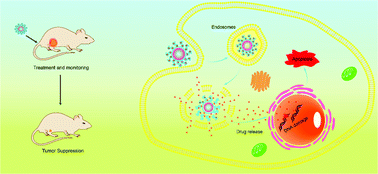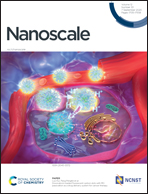Doxorubicin-loaded fluorescent carbon dots with PEI passivation as a drug delivery system for cancer therapy†
Abstract
In this work, we reported a novel and effective cancer treatment strategy by fabricating carbon dot (CD)-polyethylenimine (PEI)-doxorubicin (DOX) antitumor drug complexes from a combination of PEI-passivated CDs (CD-PEI) and DOX. CD-PEI was synthesized by the one-step microwave hydrothermal carbonization of a mixture of glycerol and PEI-25k, enabling simultaneous synthesis and surface passivation of CDs. DOX was loaded onto CD-PEI by electrostatic interactions. The results show that this system not only improves selective drug release but also prolongs the drug release time and improves the killing effect on tumors. Compared with free DOX, the CD-PEI-DOX complex has a stronger killing effect on liver cancer cells (MHCC-97L and Hep3B cells) but a very low killing effect on normal liver cells (L02). Studies have also confirmed that compared with DOX alone, CD-PEI-DOX nanoparticles can effectively inhibit tumors because of the larger amount of drugs localized in tumor cells and the higher apoptosis rate of MHCC-97L cells. In vivo experiments confirmed that CD-PEI-DOX has a stronger inhibitory effect on tumor growth, indicating that CD-PEI-DOX nanomedicine has inhibitory effects on tumors.



 Please wait while we load your content...
Please wait while we load your content...